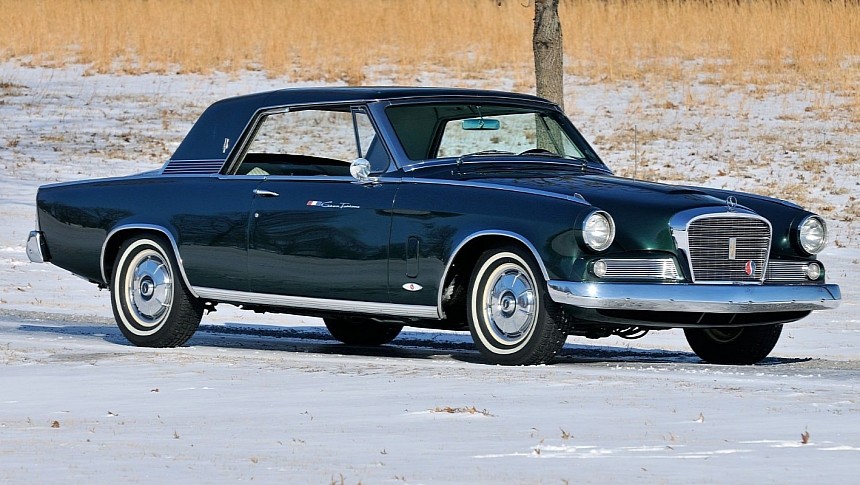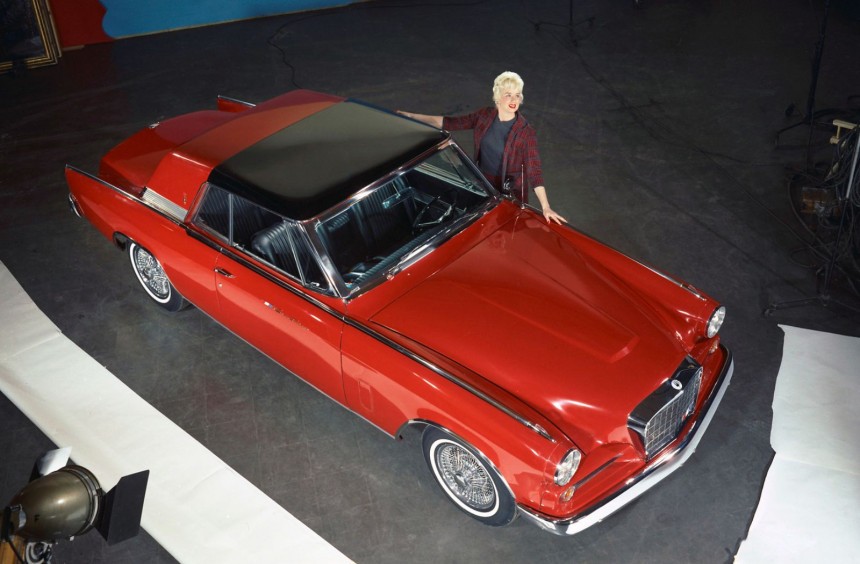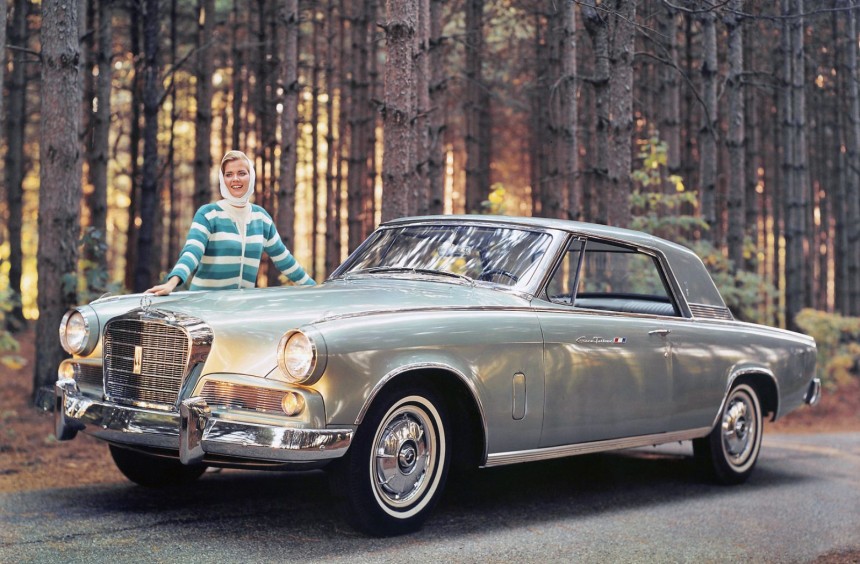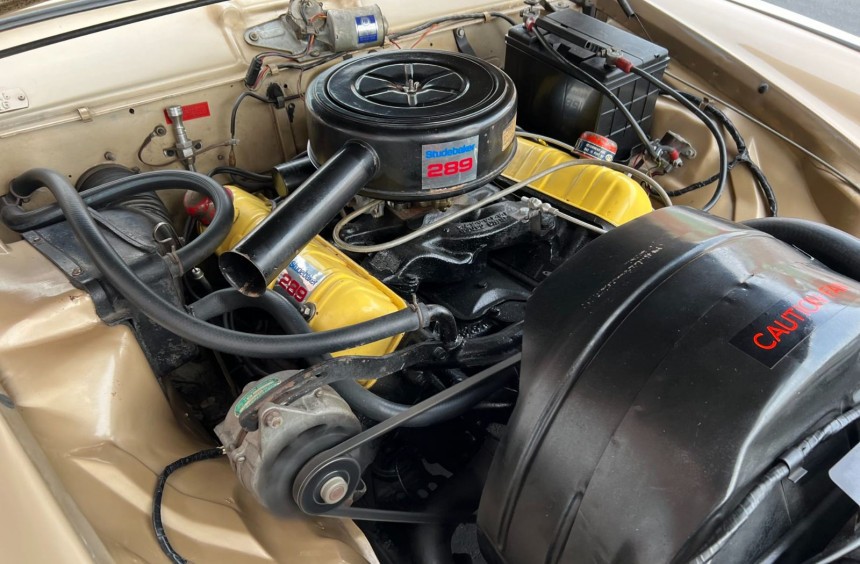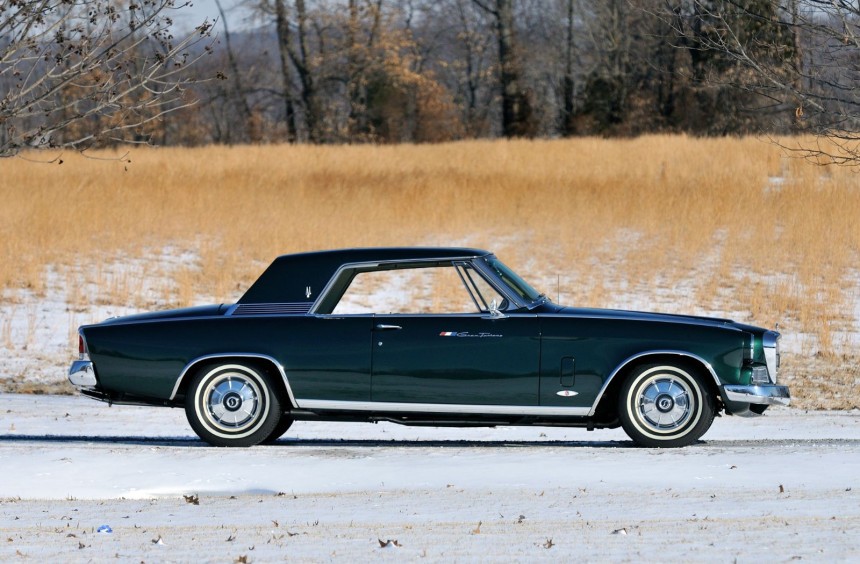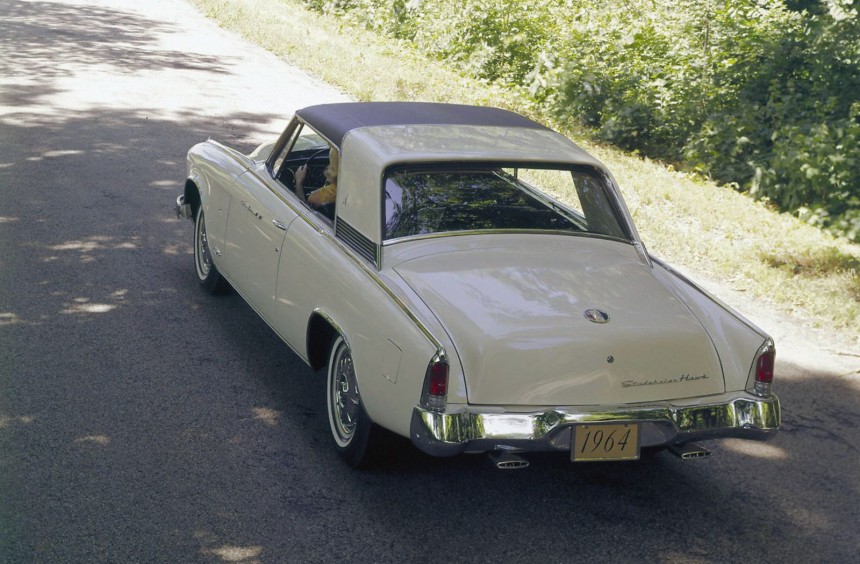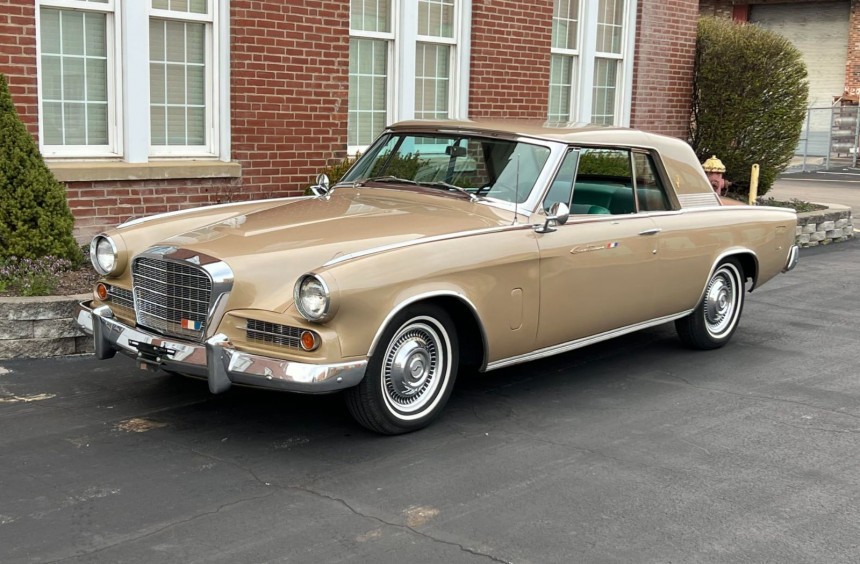Developed in record-breaking time with few resources by a company facing extinction, the Gran Turismo Hawk was one of the finest purebred grand tourers produced in the US.
Though few remember it today, Studebaker was once one of the oldest, most prestigious American carmakers - despite not being based in Detroit.
Founded in 1852, the company started as a traditional coachbuilder that manufactured wagons, buggies, carriages, and harnesses.
Studebaker began building automobiles in 1902, initially developing EVs (yes, they were around back then and quite popular), but two years later, it also added ICE-powered cars to its resume.
For the next fifty years, it managed to survive in a market dominated by Detroit's Big Three by offering well-built models focused on technical innovation, safety, and reliability.
However, by the early 1960s, the company was struggling to navigate through murky financial waters, and one of the ways it tried to dodge an imminent demise was to revitalize its flagship model.
The Hawk series, which debuted in 1956, continued to serve as the carmaker's flagship for the 1961 model year, but with sales dwindling, it desperately needed a refresh.
To revitalize the Hawk, newly appointed president Sherwood Egbert enlisted the help of close friend Brooks Stevens.
A graduate of Cornell University's architecture school, Stevens was a well-known industrial designer passionate about building and racing cars.
With a budget of approximately seven million dollars and just six months to spare, the stylist took on the task of redesigning both the Hawk and the smaller Lark models.
To understand just how impossible that task was, keep in mind that, back then, Detroit's big corporations allocated more than five times as much money to revitalize a single model, giving their staff around three years to complete the project.
To everyone's amazement, the designer delivered a thoroughly refreshed prototype in July 1961 - a month ahead of the deadline.
Initially codenamed Hawk Monaco but eventually christened Grand Turismo Hawk, the restyled flagship lived up to its name by combining the latest, most popular American automotive design trends with cues inspired by successful European grand tourers.
At the front, the revitalized Hawk looked similar to its predecessors, but Stevens went on to redesign the headlights and radiator grille, molding the latter after the grille of the era's Mercedes-Benz models - which, at the time, were imported and sold in the US by Studebaker's dealership network.
Though the front fascia wasn't much of an upgrade, the rest of the bodywork was drastically redesigned.
With only the doors borrowed from previous models, Stevens reshaped the entire roofline, adding thick C-pillars similar to those used by Ford on the widely popular Thunderbird's removable hardtop.
Furthermore, the rear end of the GT Hawk no longer featured out-of-style tailfins, as the famed designer went for a classier swept-back look complemented by Lincoln Continental-inspired taillights and a faux chrome grille.
Steevens also made changes to the interior that received various improvements, like an innovative, fully-padded dashboard (one of the first of its kind), turning the Hawk from obsolete to elite not just in record-breaking time but using inexpensive refinements.
While Brooks Stevens worked wonders with the GT Hawk's body, which now looked modern enough to challenge even European grand tourers, Studebaker's engineering department reasoned that the existing chassis was still good enough.
Therefore, the GT Hawk inherited its predecessor's chassis with a slightly revamped suspension, the same four-wheel drum brakes, and steering system (both optionally power-assisted), as well as the 289-ci (4.7-liter) V8 that utilized a low compression ratio (8.5:1), making it highly reliable in the long run.
Mated to either a standard three-speed manual, an optional overdrive four-speed Flight-O-Matic auto, or a four-speed manual (also optional), the V8 made 210 hp in standard, two-barrel-carb form or 225 hp with the optional four-barrel.
The GT Hawk was first available during the 1962 model year, with sales reaching 8,388 units. While that figure was nearly ten times less than what Ford managed to achieve with the Thunderbird that year, it was a glimmer of hope for the struggling South Bend, Indiana-based company.
After an encouraging debut year, Studebaker decided to make the GT Hawk even more appealing for 1963 by adding the "Super" high-performance package.
Apart from new goodies like front disc brakes, radius rods, a rear anti-roll bar, and front seatbelts, the package added the R-series Jet Thrust engine options borrowed from the innovative Avanti.
In R1 guise, the potent, naturally-aspirated 289 V8 made 289 hp, but potential customers who wanted more power could go for the R2-spec engine, which, thanks to a Paxton supercharger, pushed output to 335 hp.
But, despite its new superpowers, the GT Hawk lost even more ground to its main rivals (Ford Thunderbird and Pontiac Grand Prix), as sales dropped to 4,009 units.
For the 1964 model year, the GT Hawk received a series of improvements, including a vinyl-covered roof, a new trunk lid without the faux grille, and the addition of an AM/FM radio to the options list.
Sadly, by this point, Studebaker's downfall was inevitable. With no funds to match the marketing campaigns of its rivals, sales continued to drop, and in December 1963, the company discontinued the model and closed its South Bend, Indiana, plant.
Dealerships continued to sell remaining GT Hawks throughout the first part of 1964, but when the model year ended, the total sales figure reached an abysmal 1,484 units.
Though few remember it today, the Studebaker Gran Turismo Hawk remains one of the finest purebred gran tourers ever built in the US.
With timeless styling, adequate power, and supreme comfort, it could go toe-to-toe with its European contemporaries. As MotorTrend magazine put it, the GT Hawk was "a willing and able car definitely in the tradition of the high-speed tourers of Europe."
Despite this, the average value for a surviving model in great shape currently stands at $18,460, according to classic.com.
Models equipped with the R1 or R2 engines can cost more than twice as much, but a standard-spec 289-powered example can be an affordable option for someone who wants a budget-friendly classic.
If you want to see how one of the surviving examples looks and drives like today, we recommend watching the YouTube video below by Lou Costabile.
Founded in 1852, the company started as a traditional coachbuilder that manufactured wagons, buggies, carriages, and harnesses.
Studebaker began building automobiles in 1902, initially developing EVs (yes, they were around back then and quite popular), but two years later, it also added ICE-powered cars to its resume.
For the next fifty years, it managed to survive in a market dominated by Detroit's Big Three by offering well-built models focused on technical innovation, safety, and reliability.
However, by the early 1960s, the company was struggling to navigate through murky financial waters, and one of the ways it tried to dodge an imminent demise was to revitalize its flagship model.
A seemingly-impossible task
To revitalize the Hawk, newly appointed president Sherwood Egbert enlisted the help of close friend Brooks Stevens.
A graduate of Cornell University's architecture school, Stevens was a well-known industrial designer passionate about building and racing cars.
With a budget of approximately seven million dollars and just six months to spare, the stylist took on the task of redesigning both the Hawk and the smaller Lark models.
To understand just how impossible that task was, keep in mind that, back then, Detroit's big corporations allocated more than five times as much money to revitalize a single model, giving their staff around three years to complete the project.
From obsolete to elite in just five months
Initially codenamed Hawk Monaco but eventually christened Grand Turismo Hawk, the restyled flagship lived up to its name by combining the latest, most popular American automotive design trends with cues inspired by successful European grand tourers.
At the front, the revitalized Hawk looked similar to its predecessors, but Stevens went on to redesign the headlights and radiator grille, molding the latter after the grille of the era's Mercedes-Benz models - which, at the time, were imported and sold in the US by Studebaker's dealership network.
Though the front fascia wasn't much of an upgrade, the rest of the bodywork was drastically redesigned.
With only the doors borrowed from previous models, Stevens reshaped the entire roofline, adding thick C-pillars similar to those used by Ford on the widely popular Thunderbird's removable hardtop.
Furthermore, the rear end of the GT Hawk no longer featured out-of-style tailfins, as the famed designer went for a classier swept-back look complemented by Lincoln Continental-inspired taillights and a faux chrome grille.
Steevens also made changes to the interior that received various improvements, like an innovative, fully-padded dashboard (one of the first of its kind), turning the Hawk from obsolete to elite not just in record-breaking time but using inexpensive refinements.
Nothing drastically new under the redesigned body
Therefore, the GT Hawk inherited its predecessor's chassis with a slightly revamped suspension, the same four-wheel drum brakes, and steering system (both optionally power-assisted), as well as the 289-ci (4.7-liter) V8 that utilized a low compression ratio (8.5:1), making it highly reliable in the long run.
Mated to either a standard three-speed manual, an optional overdrive four-speed Flight-O-Matic auto, or a four-speed manual (also optional), the V8 made 210 hp in standard, two-barrel-carb form or 225 hp with the optional four-barrel.
The GT Hawk was first available during the 1962 model year, with sales reaching 8,388 units. While that figure was nearly ten times less than what Ford managed to achieve with the Thunderbird that year, it was a glimmer of hope for the struggling South Bend, Indiana-based company.
Giving the Gran Turismo Hawk superpowers
Apart from new goodies like front disc brakes, radius rods, a rear anti-roll bar, and front seatbelts, the package added the R-series Jet Thrust engine options borrowed from the innovative Avanti.
In R1 guise, the potent, naturally-aspirated 289 V8 made 289 hp, but potential customers who wanted more power could go for the R2-spec engine, which, thanks to a Paxton supercharger, pushed output to 335 hp.
But, despite its new superpowers, the GT Hawk lost even more ground to its main rivals (Ford Thunderbird and Pontiac Grand Prix), as sales dropped to 4,009 units.
A sad ending for one of the finest grand tourers produced in the US
Sadly, by this point, Studebaker's downfall was inevitable. With no funds to match the marketing campaigns of its rivals, sales continued to drop, and in December 1963, the company discontinued the model and closed its South Bend, Indiana, plant.
Dealerships continued to sell remaining GT Hawks throughout the first part of 1964, but when the model year ended, the total sales figure reached an abysmal 1,484 units.
A budget-friendly classic
With timeless styling, adequate power, and supreme comfort, it could go toe-to-toe with its European contemporaries. As MotorTrend magazine put it, the GT Hawk was "a willing and able car definitely in the tradition of the high-speed tourers of Europe."
Despite this, the average value for a surviving model in great shape currently stands at $18,460, according to classic.com.
Models equipped with the R1 or R2 engines can cost more than twice as much, but a standard-spec 289-powered example can be an affordable option for someone who wants a budget-friendly classic.
If you want to see how one of the surviving examples looks and drives like today, we recommend watching the YouTube video below by Lou Costabile.
